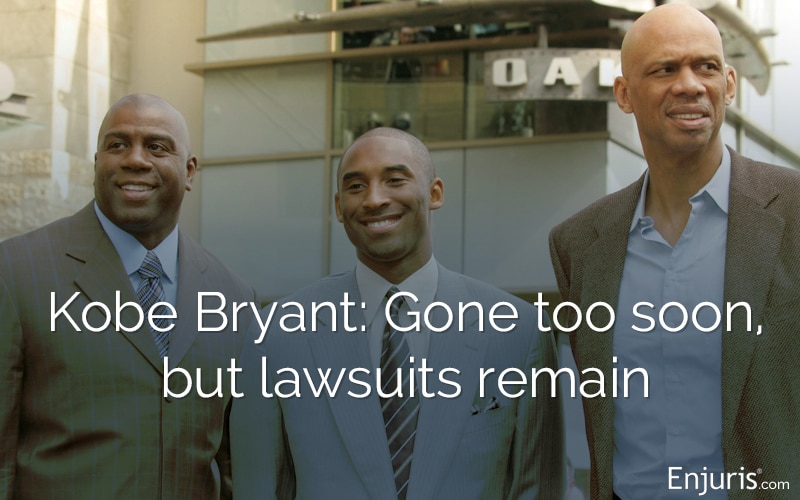
The Grand Canyon is a destination on many bucket lists, but few would imagine it as the scene of their final moments.
What began as a picturesque sightseeing trip ended in tragedy when an Airbus EC130 B4 helicopter crashed, claiming the lives of five British tourists. Among them was Jonathan Udall, who, in a heartbreaking twist of fate, survived the initial impact but succumbed to his injuries twelve days later.
Jonathan’s family pursued legal action, filing a wrongful death lawsuit that led to a historic $100 million settlement—the largest sum ever awarded for a case of its kind.
The Grand Canyon helicopter crash
On February 10, 2018, at around 4:42 PM, Jonathan and Ellie Milward Udall, along with four other passengers, boarded the Airbus EC130 B4 helicopter in Boulder City, Nevada.
After touring the Grand Canyon, the pilot headed toward Quartermaster, a routine landing site within the Grand Canyon.
The flight was part of a scheduled sequence where ten helicopters were to land at Quartermaster that afternoon. As the pilot approached, the varied orientations of the already landed helicopters indicated inconsistent wind conditions.
The pilot began a left-turning descent towards the landing zone. However, during this maneuver, the helicopter was hit by what the pilot described as a “violent gust of wind,” causing the helicopter to spin uncontrollably.
A fellow pilot, observing from the ground, watched as the helicopter decelerated and pitched up by about 15 degrees. While trying to maintain altitude, it began a left turn towards the landing site. In this turn, the helicopter’s attitude shifted from level to nose-low, and then began drifting backward. As it continued to spin, completing two full 360-degree rotations, it ultimately collided with the terrain.
The crash was immediately followed by a post-crash fire.
Three of the passengers were unable to flee the helicopter and burned to death. Two of the passengers, including Jonathan Udall, sustained severe burns and died several days later. One passenger and the pilot survived.
A subsequent investigation revealed no mechanical failures, ultimately determining that the crash was likely due to a loss of tail rotor effectiveness, the pilot’s subsequent loss of helicopter control, adverse wind conditions, and the site’s challenging topography.
Wrongful Death Lawsuits in the Kobe Bryant
Helicopter Crash
Learn what led to the helicopter crash that killed Los Angeles Lakers superstar Kobe Bryant.
Wrongful death lawsuit against Airbus and Papillon Airways
In the wake of the accident, the Udalls, devastated by the loss of their son, filed a lawsuit against Papillon Airways and Airbus Helicopters.
The crux of their argument lay in the absence of a crash resistant fuel system (CRFS) in the helicopter—a safety feature they believe could have spared their son’s life.
Notably, the Federal Aviation Administration (FAA) introduced improved fuel system crash resistance standards for new helicopters to minimize fuel spillage and improve evacuation times. However, these standards were not applied retroactively to existing helicopters, such as the one involved in the crash.
Nevertheless, some helicopter manufacturers voluntarily upgraded their helicopters to include the CRFS. According to the lawyer for the Udalls, there was “no good reason why a CRFS was not installed on the subject helicopter,” as it has been well-known in the industry and readily available since the 1970s.
“The Udall family wants to shine a spotlight on this issue so the industry will take note and voluntarily seek to correct this public health issue,” said the attorney for the Udalls. “They don’t want anyone else to go through what their son went through in an otherwise survivable accident — not a broken bone. He would have walked away.”
Ultimately, the Udalls settled their wrongful death lawsuit for $100 million. Although this sum can’t bring back Jonathan, the historic amount reflects, in part, the suffering Jonathan endured. Specifically, Jonathan faced an excruciating wait of seven hours for rescue, enduring this period with severe burns covering 90 percent of his body. He then fought for another twelve days before ultimately succumbing to his injuries.
Product defect lawsuits
The law recognizes three types of defects that can lead to a helicopter crash lawsuit:
| Type | Definition | Example |
|---|---|---|
| Manufacturing defect |
A defectively manufactured product is one that—though properly designed—left the manufacturer in a condition other than intended. | A helicopter's rotor blade was designed to precise specifications, ensuring balance and aerodynamics. However, due to an error in the manufacturing process, the blade was not properly tempered, causing it to fracture during flight, a clear deviation from its intended high-quality condition. |
| Design defect |
A product is defectively designed if it failed to perform as safely as a reasonable person would expect, even when used as intended (or at least in a manner that was reasonably foreseeable) | A helicopter model was designed with a fuel tank positioned in a way that, even under normal operating conditions, made it highly susceptible to rupturing upon impact. Despite being used as intended, this inherent design flaw led to a higher risk of post-crash fires, significantly compromising the safety that a reasonable person would expect from such an aircraft. |
| Failure to warn |
Manufacturers have a duty to warn users of the dangers that can be reasonably anticipated and that are inherent in their products. | A helicopter was equipped with an advanced autopilot system, but the manufacturer failed to provide adequate instructions or warnings about the system's limitations in certain weather conditions. Without this critical information, pilots were unaware of the potential risks, leading to situations where the system's performance was compromised, posing a significant danger that could have been reasonably anticipated by the manufacturer. |
The following parties may be held liable:
- Manufacturers: A manufacturer is an individual or entity that creates, assembles, constructs, or otherwise prepares a product or component before the sale to a customer.
- Sellers: A seller is a person engaged in the business of selling or leasing a product for resale, use, or consumption.
If you file a helicopter crash lawsuit, your attorney will conduct discovery in order to obtain as much evidence as possible to support your claim. This evidence might include:
- The defective product (or a similar product if the actual product is no longer available)
- The product manufacturing guidelines
- Video footage from the manufacturing plant
- Relevant internal communications (such as emails between designers discussing potential problems with the design)
- Incident reports
- Medical records
- Testimony from designers, manufacturers, and others who can speak about the defective product

